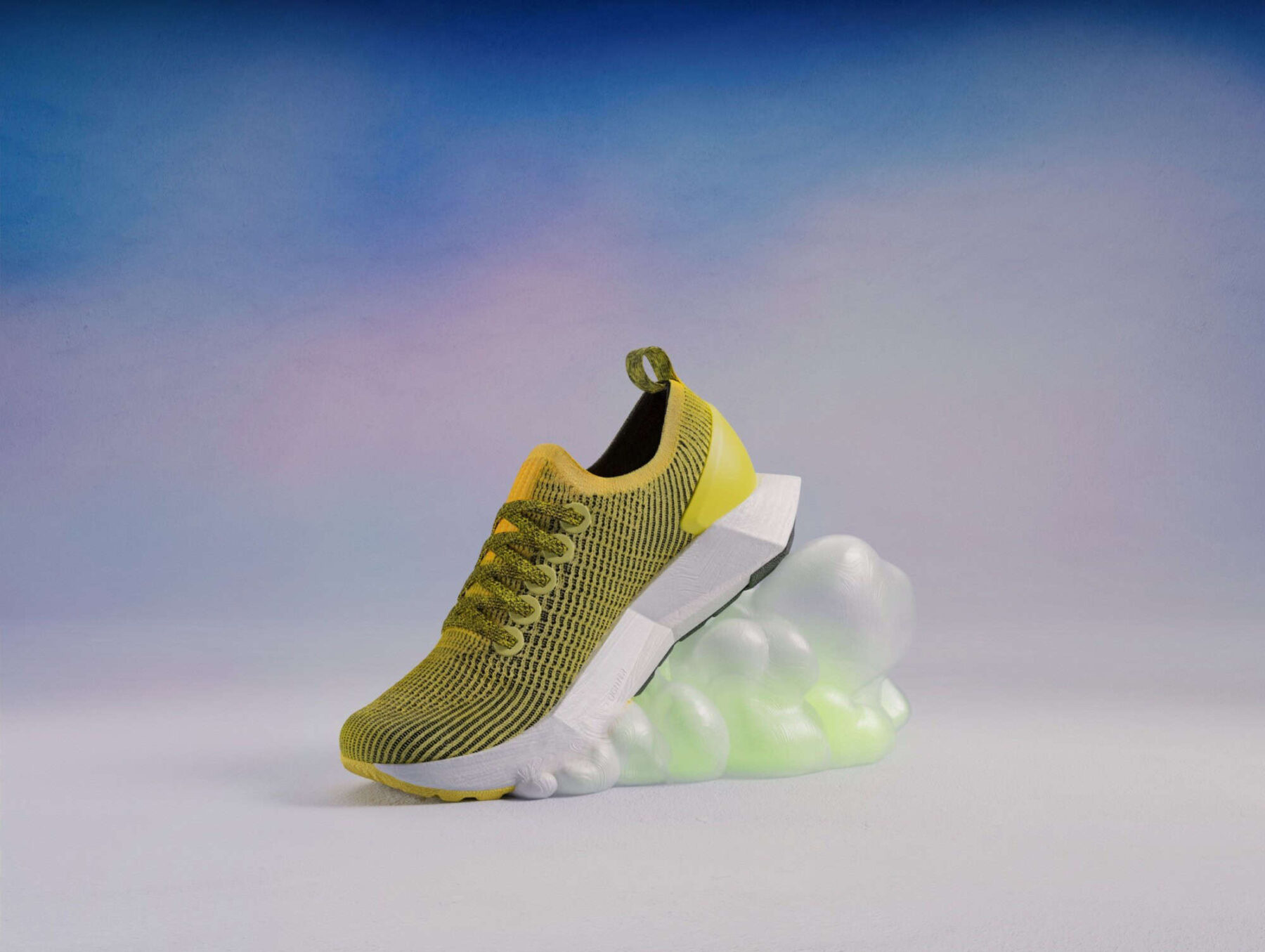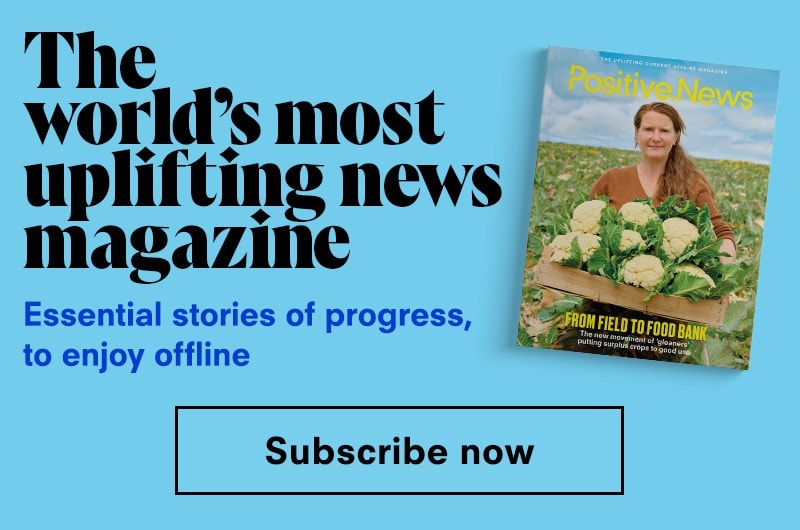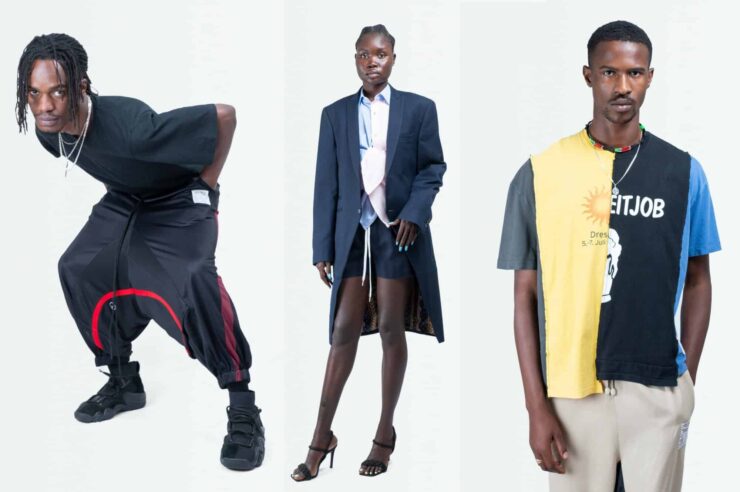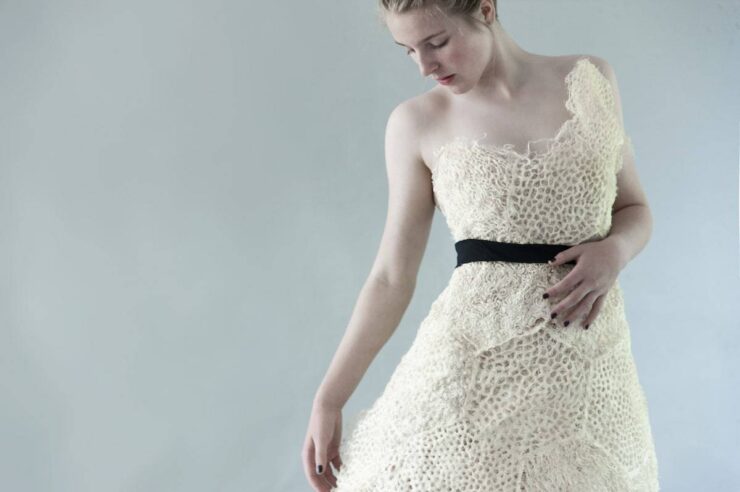They may sound like sci-fi, but cutting-edge green textiles – from mushroom leather to seaweed silk – are being embraced by brands aware of a new generation of conscious shoppers
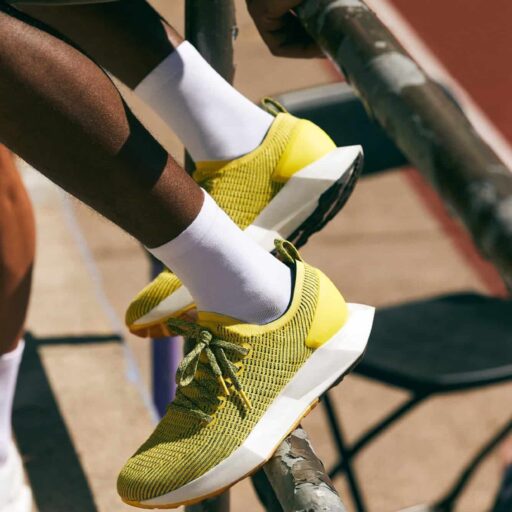
When it comes to the tech needed to create a decent running shoe, the word sustainable doesn’t often spring to mind. The performance-focused midsoles that athletes rely on are usually synthetic and petroleum-based, and research has shown that producing the average pair of running shoes is equivalent to leaving a 100-watt non-LED lightbulb on for a week. Plus, those man-made fibres are not going to win the race when it comes to biodegrading.
But this is not your average pair of running shoes. Allbirds’ Tree Flyer features a midsole made from SwiftFoam, a material that’s made using castor beans rather than petroleum. Any excess waste from making the midsole is then used to make the shoe’s heel, and in terms of performance, the SweetFoam️ midsole keeps up with its rivals with a rebound rate of 70 per cent.
Image: Allbirds

One of the biggest environmental and societal issues associated with fabric production is water use and contamination (it takes 3,000 litres of water to make one cotton shirt alone), so anything that reuses the water or even better, doesn’t use any fresh water at all, is a very good thing indeed. Enter fashion-meets-science brand Pangaia, whose newly developed silky C-FIBER️ fabric is part-seaweed, part-eucalyptus and 100 per cent biodegradable.
Growing naturally underwater, the seaweed requires no additional irrigation whatsoever, and is harvested on a four-yearly cycle, allowing for complete regeneration. Meanwhile, the eucalyptus, which grows quickly even in dry conditions, is processed into lyocell using a closed-loop system, which recycles 99 per cent of solvents rather than flushing them into the water system.

Although it looks and feels like leather, Mylo️ Unleather is created in just a matter of days, made using – or rather, grown from – mycelium, the root-like systems of fungi. It uses far fewer resources to produce than leather, and is certified bio-based, meaning it is made predominantly from renewable ingredients found in nature today. Oh, and you don’t need to rear a cow or cause any deforestation while you’re at it, either.
The manufacturer, Bolt Threads, mimics the conditions of the forest floor in vertical labs powered entirely by renewable energy. Stella McCartney was the first designer to send mushroom leather down the catwalk during her summer 2022 collection. McCartney debuted the Frayme Mylo️, a bag made from Mylo️ which will be available to buy later this year. Meanwhile, Adidas has recreated its iconic Stan Smith tennis shoes using the material.
Image: Stella McCartney
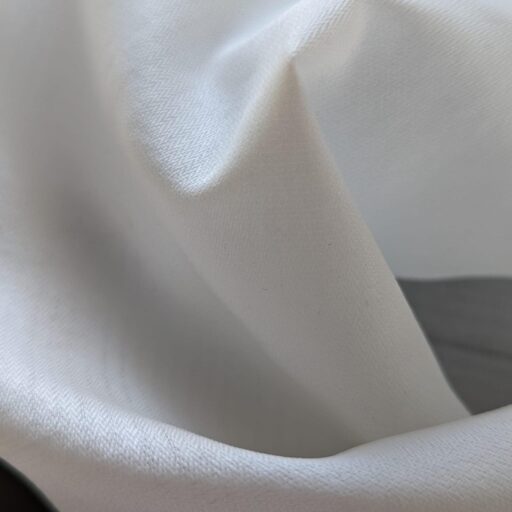
Polyester, which is made from petroleum (bad) and doesn’t decompose for thousands of years (double bad) is the fashion industry’s most commonly used fibre, making up 52 per cent of all fibres produced in 2020. But what if there was such a thing as renewably sourced polyester that was also compostable? The good news is, there is.
Kintra is a patent-pending bio-synthetic polyester that has shown a 95 per cent emissions reduction compared with the production of traditional polyester. At the end of its life it can either be recycled or put into industrial compost. Even its microfibres, which are released with every wash, naturally degrade in wastewater systems to keep them out of our rivers and oceans. Kintra is being developed to be used extensively. Pangaia is launching a collection made from the fibre later this year.
Image: Pangaia

Recycling plastic bottles is already done in a closed-loop system, meaning that when disposed of properly, we can easily recycle them many times (though not infinitely, so keep using those reusable bottles). But if we instead recycle plastic bottles into polyester thread, we are breaking that loop and making it much more difficult to recycle it at the end of its life.
Enter Sympatex, which recycles and re-recycles plastic bottles via its partner, Worn Again Technologies. Used by British outerwear brand The Re-Pete Project to make unisex anoraks, Sympatex’s circular system means that not only is each anorak already made from the equivalent of 29 plastic bottles, but at the end of its long life you can send it back and Worn Again Technologies and Sympatex will sort out all the recycling to make it into a brand new garment.
Image: Scott Gallagher
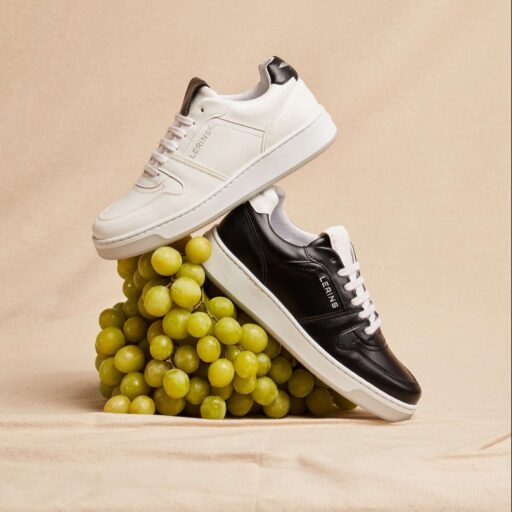
While grape juice equals wine, the leftovers – skin, seeds and stems – can be used to make something just as appealing: a new vegan alternative to leather. VEGEA grape leather is made from 75 per cent grape waste and vegetable oil; as with most leather alternatives, this needs to be bonded using a plastic (the remaining 25 per cent), but VEGEA has chosen to do this with an environmentally friendly water-based polyurethane.
Leather isn’t just a vegan issue, it’s an environmental one, too. Cattle ranching accounts for around 70 per cent of deforested land in the Amazon, and footwear makes up 47 per cent of the leather goods market, so finding a decent non-leather shoe is a good start for the eco-conscious. New footwear brand Lerins is using VEGEA, along with recycled cork and organic cotton, for its range of sustainable sneakers.
Image: Lerins London
Main image: Allbirds
Help us continue to break the bad news bias
Positive News is helping more people than ever to get a balanced view of the world – one that supports their wellbeing and empowers them to make a difference towards a better future. And as our audience and impact grows, we’re showing the rest of the media that good news matters.
But the UK’s cost of living crisis is affecting our income, with fewer people able to commit to a magazine subscription – which has traditionally been our main source of funding. Plus, paper and printing costs keep rising.
We don’t want to put a paywall on our website, because we believe everyone should have the chance to benefit from good news. But we won’t be able to continue funding our online reporting without your help.
If you value what we do and can afford to, please consider making a one-off or regular contribution as a Positive News supporter. We need 1,000 readers to contribute just £3 per month to get us through this challenging time.
And remember, as a not-for-profit, we work only in service to you, and all funds go towards our journalism.
